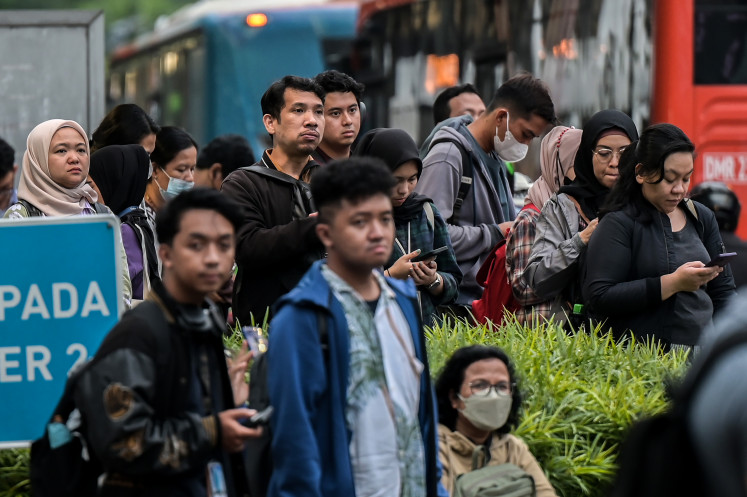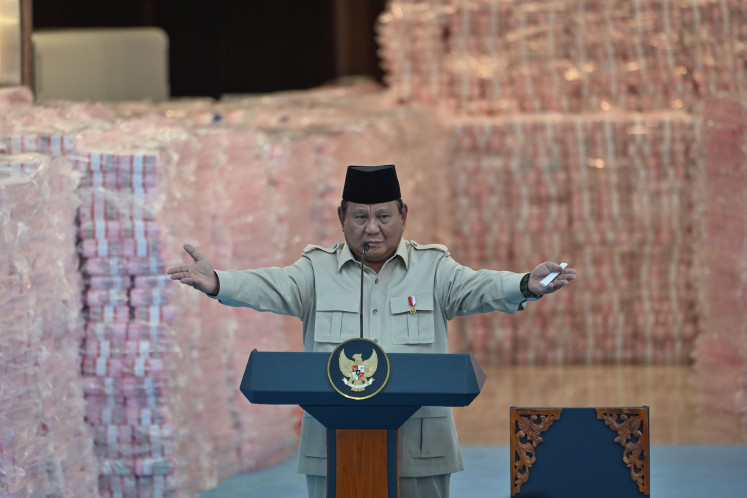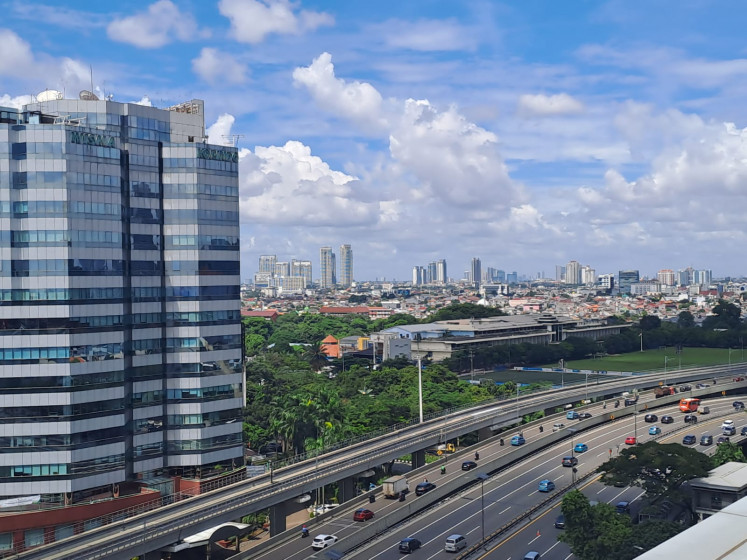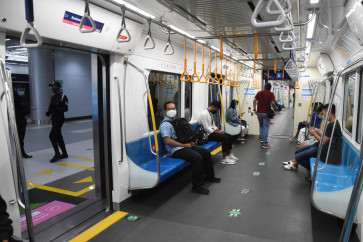Popular Reads
Top Results
Can't find what you're looking for?
View all search resultsPopular Reads
Top Results
Can't find what you're looking for?
View all search resultsYearender 2020: COVID-19 puts brakes on Jakarta's mass transit dream
Jakarta's commuters were over the moon when the capital's first subway opened in March 2019. A year later, they hardly enjoyed the transport system as the pandemic forced people to stay home.
Change text size
Gift Premium Articles
to Anyone
 Passengers sit in specially marked seats on a MRT Jakarta train car to observe physical distancing, as seen on Dec. 18, 2020 at Bundaran HI (Hotel Indonesia traffic circle) Station in Central Jakarta. While it may seem that all travel has ground to a halt amid the health crisis, MRT Jakarta has several projects in the pipeline heading toward 2021 and beyond. (Antara/Indrianto Eko Suwarso)
Passengers sit in specially marked seats on a MRT Jakarta train car to observe physical distancing, as seen on Dec. 18, 2020 at Bundaran HI (Hotel Indonesia traffic circle) Station in Central Jakarta. While it may seem that all travel has ground to a halt amid the health crisis, MRT Jakarta has several projects in the pipeline heading toward 2021 and beyond. (Antara/Indrianto Eko Suwarso)
At the outset, 2020 appeared to be a promising year for the city-owned public transportation company, PT MRT Jakarta.
After its successful launch in March 2019, Indonesia’s first high-capacity public transit service quickly attracted the hearts of commuters in the capital city. It marked the manifestation of Jakartans’ long-awaited aspiration for a modern and reliable mass transportation as a partial answer to the city’s chaotic traffic, and MRT Jakarta had big projects and ambitious goals in mind for the year.
After nearly one year of operating its first line, which spans 15.7 kilometers between Lebak Bulus Station in South Jakarta and Bundaran HI (Hotel Indonesia traffic circle) Station in Central Jakarta, the company booked Rp 60 billion (US$4.22 million) in 2019 profits, although the government subsidy made up most of its income.
MRT Jakarta also recorded around 20 million passengers in less than a year, with an average daily ridership of 83,000 passengers.
With such a strong start, president director William Sabandar projected that MRT Jakarta would reach profits of Rp 200-250 billion in 2020. He also targeted an increase in daily ridership to at least 100,000 passengers.
Read also: 2019: The new era of public transportation in Jakarta

















